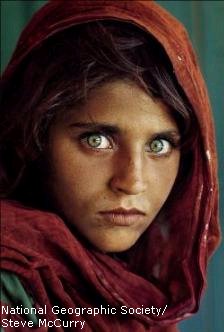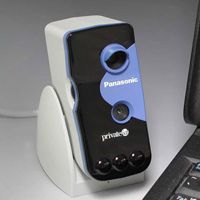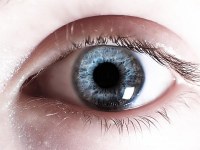 Sharbat Gula around 12 years old
Sharbat Gula around 12 years old
|
The pattern of the iris is complex and unique to each individual. Left vs. right eyes are different and eyes of identical twins also differ. Iris patterns show virtually no change over a person's lifetime.
Although her name was not known at the time, Sharbat Gula's picture, titled "Afghan Girl", appeared on the June 1985 cover of National Geographic magazine. The image itself with her piercing green eyes staring directly into the camera was named as "the most recognized photograph" in the history of the magazine.
Several attempts during the1990's to locate her was unsuccessful. A number of women came forward and identified themselves as the famous Afghan Girl. Her identity was confirmed using biometric technology which matched her iris patterns to those of the photograph with virtual certainty. She vividly recalled being photographed – she had never had her picture taken before or since. In the late 1980s, Gula married; she has three daughters. A fourth daughter died in infancy. Sharbat stated she hopes that her girls will get the education she was never able to complete.
You can find a National Geographic article here and a Wikipedia article here.
A higher resolution photo is available here.
|



 Sharbat Gula around 12 years old
Sharbat Gula around 12 years old